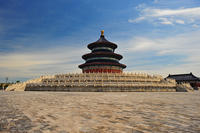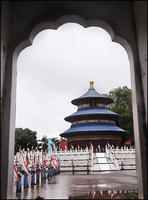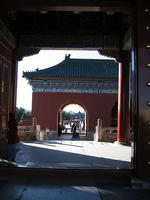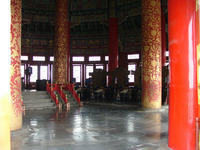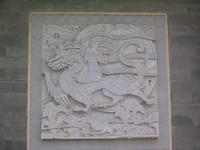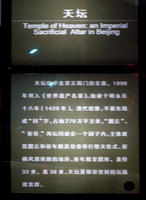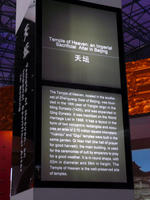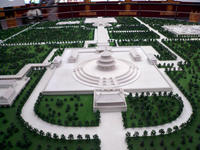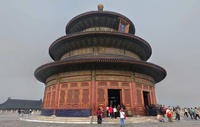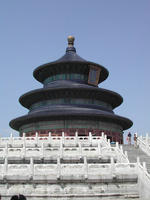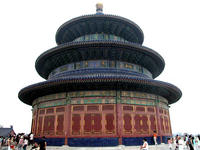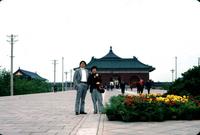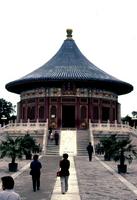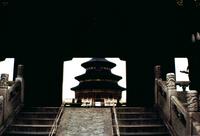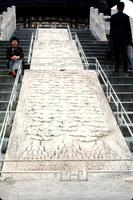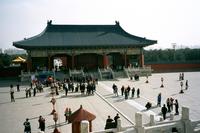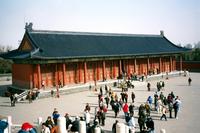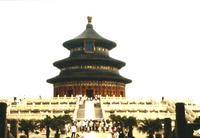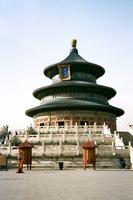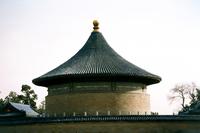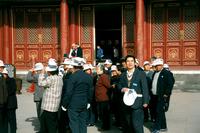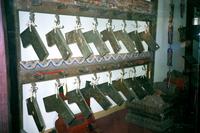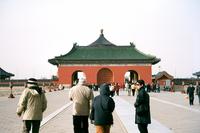You are in: Asia -> China -> Temple of Heaven: an... , and traditional search or Image Gallery will yield results of this site only
Temple of Heaven: an Imperial Sacrificial Altar in Beijing
| Site number: | 881 |
|
| Type of site: | Cultural | |
| Date: | 15th century | |
| Date of Inscription: | 1996 | |
| Location: | Asia, China, Beijing, Tiantan Park | |
Up to 75 images are shown here. Click on each for more details or on Image Gallery for more images.
Six official UN languages:
Arabic,
Chinese,
English,
French,
Russian,
Spanish
Other languages: Dutch, Esperanto, Finnish, German, Hebrew, Italian, Japanese, Norwegian-bokmål, Portuguese, Swedish, Tamil, Thai, Vietnamese
Other languages: Dutch, Esperanto, Finnish, German, Hebrew, Italian, Japanese, Norwegian-bokmål, Portuguese, Swedish, Tamil, Thai, Vietnamese
| Description: | Founded in the early 15th century, the Temple of Heaven is a noble assembly of fine cult buildings positioned in gardens and enclosed by historic pine woods. The relationship between earth and heaven is symbolized by the overall layout and individual buildings of the site. The idea of the human world and God's world, as well as the special role played by the emperors within that relationship, stands at the heart of Chinese cosmogony. --WHMNet paraphrase from the description at WHC Site, where additional information is available. For 360 degree imaging of this site, click here. | |
| The Temple of Heaven, literally the Altar of Heaven (traditional Chinese: 天壇; simplified Chinese: 天坛; pinyin: Tiāntán; Manchu: Abkai mukdehun) is a complex of Taoist buildings situated in southeastern urban Beijing, in Xuanwu District. The complex was visited by the Emperors of the Ming and Qing dynasties for annual ceremonies of prayer to Heaven for good harvest. It is regarded as a Taoist temple, although Chinese Heaven worship, especially by the reigning monarch of the day, pre-dates Taoism. Earth was represented by a square and Heaven by a circle; several features of the temple complex symbolize the connection of Heaven and Earth, of circle and square. The whole temple complex is surrounded by two cordons of walls; the outer wall has a taller, semi-circular northern end, representing Heaven, and a shorter, rectangular southern end, representing the Earth. Both the Hall of Prayer for Good Harvests and the Earthly Mount are round, each standing on a square yard, again representing Heaven and Earth. The number nine represents the Emperor and is evident in the design of the Earthly Mount: a single round marmor plate is surrounded by a ring of nine plates, then a ring of 18 plates, and so on for a total of nine surrounding rings, the outermost having 9×9 plates. The Hall of Prayer for Good Harvests has four inner, twelve middle and twelve outer pillars, representing the four seasons, twelve months and twelve traditional Chinese hours respectively. All the buildings within the Temple have special dark blue roof tiles, representing the Heaven. The Seven-Star Stone Group, east of the Hall of Prayer for Good Harvest, represents the seven peaks of Taishan Mountain, a place of Heaven worship in classical China. --Wikipedia. Text is available under the Creative Commons Attribution-ShareAlike License. For 360 degree imaging of this site, click here. | ||
| Source: | http://whc.unesco.org/en/list/881 | |
| Reference: | 1. UNESCO World Heritage Center, Site Page. | |






